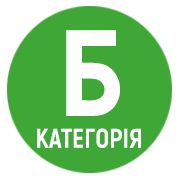LEXICAL AND SEMANTIC GROUPS OF SOMATISMS IN THE STRUCTURE OF PHRASEOLOGY
DOI:
https://doi.org/10.32689/maup.philol.2024.4.2Keywords:
somatic phraseology, Ukrainian language, culture, semantics, somatisms, national mentality, phraseological units, cultural studies, body symbolismAbstract
The article is devoted to the analysis of lexical and semantic groups of somatisms in the architectonics of Ukrainian phraseology, based on the materials of lexicographic works. The aim of the article is to systematically analyse the lexical and semantic group of somatisms in the structure of Ukrainian phraseology on the basis of the Phraseological Dictionary of the Ukrainian Language and Phraseology of the Modern Ukrainian Language (eds. V. Uzhchenko, D. Uzhchenko), focusing on their classification, semantic and stylistic features, as well as cultural and cognitive aspects. The scientific novelty of the work lies in the systematisation of phraseological units with somatic components of the Ukrainian language according to their semantic structure, the identification of specific features of the somatic seme as carriers of national and cultural information, as well as the establishment of regularities of their functioning in the Ukrainian phraseology. The research methodology involves a comprehensive approach that integrates a number of scientific methods to achieve the goal. The work combines quantitative analysis, methods of lexical and semantic classification, component analysis of meanings, contextual analysis and cognitive approach to identify conceptual and cultural features of somatisms in phraseological units. The paper identifies the key lexical and semantic groups of somatisms, reveals their role in the phraseological system of the language and their influence on the formation of the national and cultural space. Phraseologisms with somatic components are an important means of verbalising emotions, interpersonal relationships and social stereotypes. The study has identified the main semantic groups of somatisms, in particular those related to emotional, physical and socio-cultural aspects. It is established that somatisms are an important tool of cognitive and cultural coding in Ukrainian phraseology. The results of the study can be used in lexicography, cognitive linguistics and intercultural communication.
References
Баньоі В., Петруляк Н. Соматизми у складі фразеологізмів закарпатської говірки села Руські Комарівці Ужгородського району: етнолінгвістичний аспект. Науковий вісник Ужгородського університету: серія: Філологія. Ужгород: ПП Данило С. І., 2020. Вип. 1 (43). С. 39–48.
Бортун К. О. Структурні особливості асоціативного поля ергонімів міста Вінниці. Науковий вісник Міжнародного гуманітарного університету. Сер.: Філологія. 2022. № 56. С. 16‒20. DOI https://doi.org/10.32841/2409-1154.2022.56.4
Бортун К. О. Функційно-семантичні особливості часток в імперативних висловленнях. Science and Education a New Dimension. Philology. Budapest, 2017. V(39). С. 11–16.
Бортун К. О. Теоретико-поняттєві особливості конотації у сучасній українській мові. Вісник гуманітарного наукового товариства: наукові праці. Випуск 23. Черкаси: Черкаський інститут пожежної безпеки імені Героїв Чорнобиля, НУЦЗ України. 2023. С. 264‒268.
Бортун К. О. Транспозиційні особливості імператива у сфері способово-темпоральних форм (на матеріалі української мови). Одеський лінгвістичний вісник: Науково-практичний журнал. 2017. № 9. Т. 2. С. 65–69.
Бортун К. О. Денотатно-номінативна класифікація ергонімів міста Вінниці. The latest approaches to improving philological sciences: Scientific monograph. Riga, Latvia: «Baltija Publishing», 2024. С. 18–31. DOI https://doi. org/10.30525/978-9934-26-426-9-2
Важеніна О., Куцева А. Фразеологізми з соматичним компонентом: семантичний та етнокультурологічний аспекти. Донецький вісник НТШ. URL: litmisto.org.ua/?p=19722
Венжинович Н. Ф. Фраземіка української літературної мови в контексті когнітології та лінгвокультурології. Ужгород: ФОП Сабов А.М., 2018. 463 с.
Водяна Л. В. Символічне значення соматизмів у фразеологізмах латинської, німецької та української мов. Академічні студії. Серія «Гуманітарні науки». (1). 2022. С. 108–113. https://doi.org /10.52726/as.humanities/2022.1.16
Каріна Бортун Синтаксичні засоби вираження конотації окличних речень у романі Наталки Доляк «Шикарне життя у Вупперталі». Актуальні питання гуманітарних наук: міжвузівський збірник наукових праць молодих вчених Дрогобицького державного педагогічного університету імені Івана Франка. Дрогобич. 2022. Вип. 53. Том 1. С. 166‒170.
Мицан Д. М. Локативне вживання фразеологізмів з компонентами-назвами частин тіла. Наукові записки Національного університету «Острозька академія». Сер.: Філологічна. 2012. Вип. № 29. С. 127–129.
Панцьо С. Культурологічна вагомість соматичної лексики (на матеріалі лемківської пісні). Наукові записки Вінницького державного педагогічного університету імені Михайла Коцюбинського. Серія: філологія (мовознавство). 2012. Вип. 16. с. 155–162.
Скрипник Л. Г. Фразеологія української мови. Київ: Наук. думка 1973. 278 с.
Старостенко О. Символічне значення фітонімів в англійській та українській мовах. URL: http://ekhsuir.kspu.edu/handle/123456789/11 22
Чаєнкова О. Фразеологічні одиниці із соматичним компонентом голова. Вчені записки Таврійського національного університету імені В. І. Вернадського. Філологія. Соціальні комунікації. Київ: Гельветика, 2020. Т. 31 (70). № 2. Ч. 3. С. 141–146.
Черевко І. Образна основа фразеологічних одиниць із соматизмом кров (на матеріалі пам'яток української мови XVI ̶ першої половини XVII ст.). Науковий вісник Ужгородського університету: серія: Філологія. Ужгород: ПП Данило, 2020. Вип. 1 (43). С. 282–287.
Cambridge International Dictionary /E. Walter (ed.). Cambridge: Cambridge University Press, 2002. 604 p.
Essential Turkish Idioms (for English speakers). İzmir: Habibullah Enterprises, 2006. 205 р.
Myroslava Chesakova, Karina Bortun, Viktoriia Lohvynenko, Valerii Molotai and Nataliia Tymoshyk. Enhancing Social Protection Policy for Internally Displaced Persons in the Context of War: vol. 21. 2023. URL: https:// refpress.org/ref-vol21-a105/






